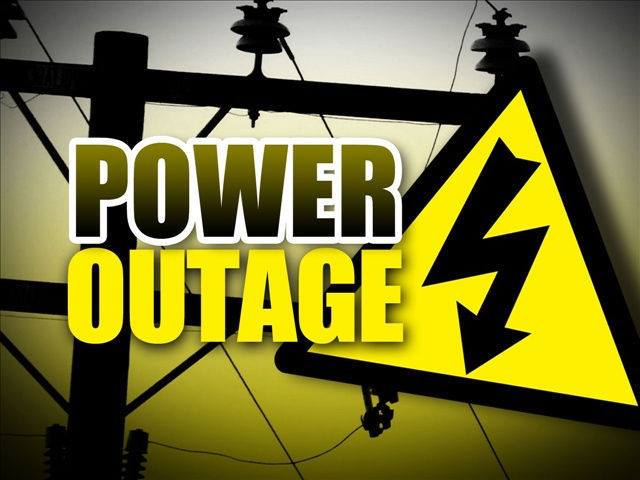What anyone with some education and worldly knowledge could have forecast - the renewable rubbish is leading to chaos and catastrophe. And bush fire smoke and dust kills solar panels.
Hot summer forecast could lead to blackouts in Victoria, energy operator warns
By Richard Willingham Updated 4 Dec 2019, 5:28pm

PHOTO: A map of Australia showing a high chance of all states experiencing warmer than average maximum temperatures.
From December until the end of February, most of Australia is forecast to have a high chance of experiencing warmer than average maximum temperatures. (Supplied: AEMO)
RELATED STORY: When the lights go out and the fridge stops humming, here's what to do
RELATED STORY: Federal-state spat brewing as Victoria, NSW face summer of power outages
RELATED STORY: Energy operator moves to prevent blackouts in Victoria and SA heatwave
Extreme weather forecast for summer will reduce the reliability of power supply across Australia in the coming months, with ageing coal plants becoming less reliable, the energy market operator has warned.
Key points:
Victoria has the highest risk of power outages in Australia as it enters summer with a coal unit and a gas plant offline
To reduce risk, the Australian Energy Market Operator (AEMO) and Victoria have secured 125 megawatts of extra reserves
AEMO may ask power networks to cut power to some customers when supply is stretched
In August, the Australian Energy Market Operator (AEMO) said a worst-case scenario could see up to 1.3 million Victorian households without power on extreme weather days if supply was not improved and major generators were not repaired.
That risk remains.
But the operator said a boom in rooftop and grid-scale solar generation in the past year had created the bulk of an extra 3,700 megawatts of generation in the national energy market.
The AEMO summer readiness plan, released today, warns that all states run the risk of unplanned blackouts because of increased heatwaves and bushfires.
"In any region, the actual occurrence of load shedding [planned power outage] could be higher than forecast … given particular combinations of weather events, plant outages, or bushfires,'' the report said.
The plan showed that Victoria remained the state at the highest risk of power outages due to faults at a coal plant in the Latrobe Valley and a gas plant in the west of the state.
The operator also warned that increased dust storms from the drought in New South Wales and Queensland was a risk to solar panels.

PHOTO:Sunbathers and swimmers enjoy the sun at St Kilda beach. Most of Australia can expect above-median daytime temperatures this summer. (AAP: David Crosling)
In Victoria's east, a coal unit at Loy Yang in Gippsland is still not fixed, but AGL said it would be back online by mid-December.
Meanwhile, a gas plant in the west of the state is not due to be operational until the end of the year.
In an effort to reduce risk, AEMO and Victoria have secured 125 megawatts of extra reserves.
But Lily D'Ambrosio, the state's Energy Minister, said it might not be enough to prevent a blackout.
"I don't think it's a sound position for anyone to give guarantees [about power] when effectively the Victorian Government doesn't own any of these generators," she said.
"They [the private owners] have an obligation and responsibility to make sure that they're maintained to the highest levels and that they are available when Victorians need it."
As part of the backup power plan, big energy users, including recycling company Visy, agree to reduce usage on extreme temperature days.
When supplies are stretched, AEMO may direct power networks to cut power to customers, which is called load shedding.
Networks may also have to shut down areas if the infrastructure cannot handle the demand from homes and businesses.
The industry said it was working hard to meet demand.
"Losing power, even for short periods during a heatwave, can cause real inconvenience," Australian Energy Council chief executive Sarah McNamara said.
"But electricity providers will continue to do everything possible to avoid that occurring.
"We are working with AEMO to have sufficient supply available for the hotter periods."
Rooftop boom, coal ageing
The spread of rooftop solar had boosted capacity and meant that the peak for demand on hot days was occurring later in the day once the sun sets, the report said.
Microgrids and smart energy systems are predicted to be the next big thing in electricity supply — allowing us to produce our own energy and share it with neighbours.
Drought could also limit the effectiveness of hydro-electricity generation.
The summer-readiness plan also highlighted how ageing coal plants continued to be less reliable, especially during extreme weather and drier conditions.
"These risks add to the deteriorating reliability of some of the older coal generation plants," AEMO's chief executive officer Audrey Zibelman said.
[highlight]Bit more here[/highlight]
https://www.abc.net.au/news/2019-12-04/ ... r/11762774





